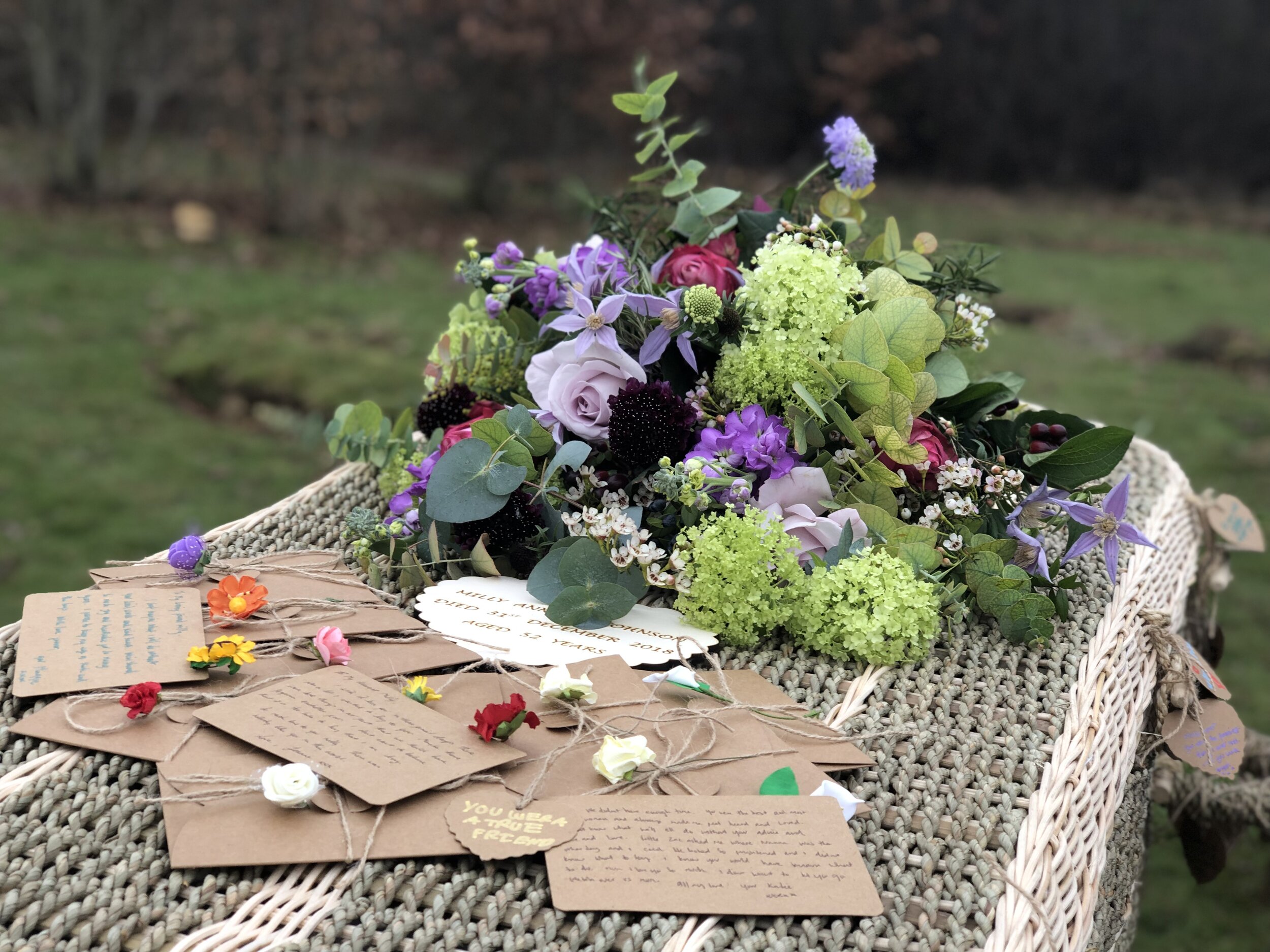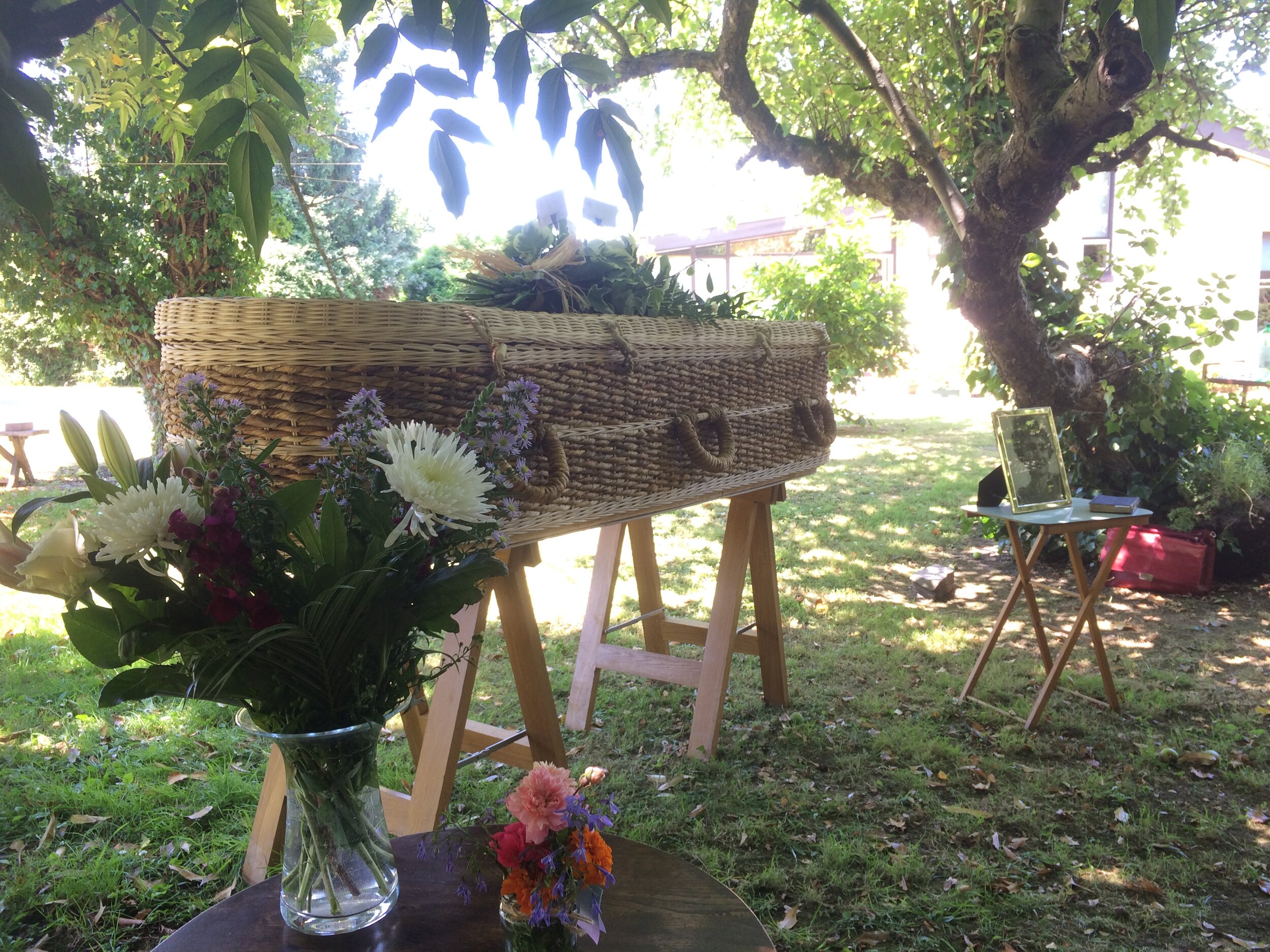Five ways to personalise a funeral ceremony
by Rosalie Kuyvenhoven, Funeral Celebrant
A funeral ceremony is a ritual event where life meets death. It provides a structure, time and space to say farewell to someone who has died and to pay tribute to their life. Through words, music, silence and ritual acts people share grief, love and special memories that help mark the transition from a life with a person to a life without them.
As a celebrant, I create and conduct non-religious funerals. There is no fixed framework or belief system that defines how the ceremony takes shape. Instead, I am guided by what the people who are arranging the funeral share with me about the person who has died, and their ideas for the ceremony. By careful listening, tuning in to their spoken and unspoken messages and gentle guidance I help them find the elements that make the funeral meaningful to them.
In this article I share five ways to personalise a funeral ceremony. They are aimed to spark your imagination and help you think about options that may work for you.
Please note that during the pandemic not all options may be possible because of the restrictions in place. Your funeral director and celebrant will be able to advise.
1. Use an object, symbol or theme that captures the person
When talking about someone’s life, interests and personality, specific symbols and themes that capture the person can come to mind that can be used in the service.
For example, for Emmy, who was a skilled quilt maker, we used the quilt as a theme throughout the funeral service. At the start, close family members covered the coffin with one of the quilts she had made. A gentle ritual of closure and transition.
Many of the quilts Emmy had made told stories connected to her life story. Some had designs inspired by her home country, one was made out of her son’s t-shirts, others were co-created with her friends.
The quilt was also a beautiful metaphor for how she had woven colours, threads and patterns into other people’s lives: an invitation to her family and friends to reflect on what this meant to them.
2. Special details that pay tribute to the person
A colour, flower, special item and even a scent can be used to personalise a service. Ask people to dress themselves in the person’s favourite colour. This colour can also be used in the flower arrangements or for the coffin colour.
If someone liked a particular flower, herb, or even a vegetable, you can use these in the flower arrangements.
Cherished objects can be placed on the coffin before or during the service. A flag of a favourite football team, a pair of trainers of someone loved walking, a hat, a teddy, a cricket bat: choose whatever captures something essential or cherished about the person.
Particular smells may remind of a person. For his partner’s funeral, John sprayed the order of service sheet in the perfume they used to wear.
3. Creating something together
Creating something in memory of the person is a beautiful and healing way to express thoughts that come with a death and share special memories.
This can be done before, during or after a funeral service. Examples:
Message writing. People are asked to write a personal memory or a message on a tag, card or piece of paper. These messages can be sent with the person or given to the family as a keepsake.
Flower or leaf tribute. Instead of a coffin spray, people can be asked to bring individual flowers to lay on top of the coffin (or, if not allowed, on a table near the coffin). In autumn, leaves can form a fitting alternative. You can also collect leaves before the service and create a garland that can be attached on the coffin.
Sing a song together. At Sonia’s funeral, a friend taught the attendees at her funeral a song to which we sent her off.
A memorial walk after the service followed by a picnic where food can be shared that reminds of the person. Collecting money for a charitable cause that was close to the persons’ heart by organising a special challenge or activity.
4. Choose a meaningful location for the funeral service
A funeral service can happen anywhere. You don’t have to go to a crematorium or burial chapel if this does not feel right for you. You can have a ceremony in a private garden, or hire a venue that is connected to the life of the person who has died. The ceremony can take place before or after the committal ritual.
June’s funeral service took place in her garden. We decorated her coffin with flowers and ivy that was growing in her garden. Her cat wandered around, curiously exploring what was going on. We played music, shared memories and read from her favourite Jane Austen novel. After the ceremony the family drove her to the cemetery where she was buried.
5. Personalised keepsakes
Receiving something tangible on the day of the funeral that reminds of the person can be a precious keepsake to remember the event and the person by.
At Anish’s funeral, who was a keen gardener, his family had prepared envelopes with flower seeds. Planting the seeds and watching new life grow in someone’s memory can give comfort and hope.
At Dick’s funeral, who worked in the music industry, everyone received a ‘backstage’ pass at the start of the service. It had his photo and a favourite quote. A modern and non-religious alternative to the prayer card.
Other examples of keepsakes families have used: favourite sweets, a handcrafted designed order of service sheet with photos and favourite quotes, a card with a poem that the person had written. At Alice’s funeral, people were invited to choose a record of her vast collection to take home.
In times of the pandemic, physical keepsakes may not always be possible, but with some imagination many virtual alternatives can be found for people to print off at home, such as: a recipe, a crossword designed around the person’s life or an origami template of a meaningful creature or object.
Some tips
Keep it manageable. Arranging a funeral is intense and there are many decisions to be made. Think what works for you, also from a practical perspective. Personalising a service can be a simple as choosing a favourite song.
Ask for help. Many people love do something to support you. Use their talents. For example, if someone is good at design, ask them to do the order sheet.
Don’t think it all has to happen at the funeral. Rituals around honouring a person and mourning their death can happen at any time: days, years, decades after a funeral has taken place.
As your grief and remembrance journey unfolds you will find new ways to process your grief, remember a life and continue the bond with the person who has died.
About Rosalie Kuyvenhoven
Rosalie creates and conducts meaningful, warm and inclusive funeral and memorial ceremonies, in-person and online. People appreciate her creative and sensitive approach and professional delivery.
Rosalie has a special interest in ceremonies at alternative venues, funerals for babies and children, and dementia-friendly ceremonies.
She has had careers in academia and the corporate world, loves climbing trees with her two children, watching art-house movies with her husband and drinking cocktails with her friends.
In 2018 she won the National Celebrant Award for Outstanding Funeral Celebrancy.







